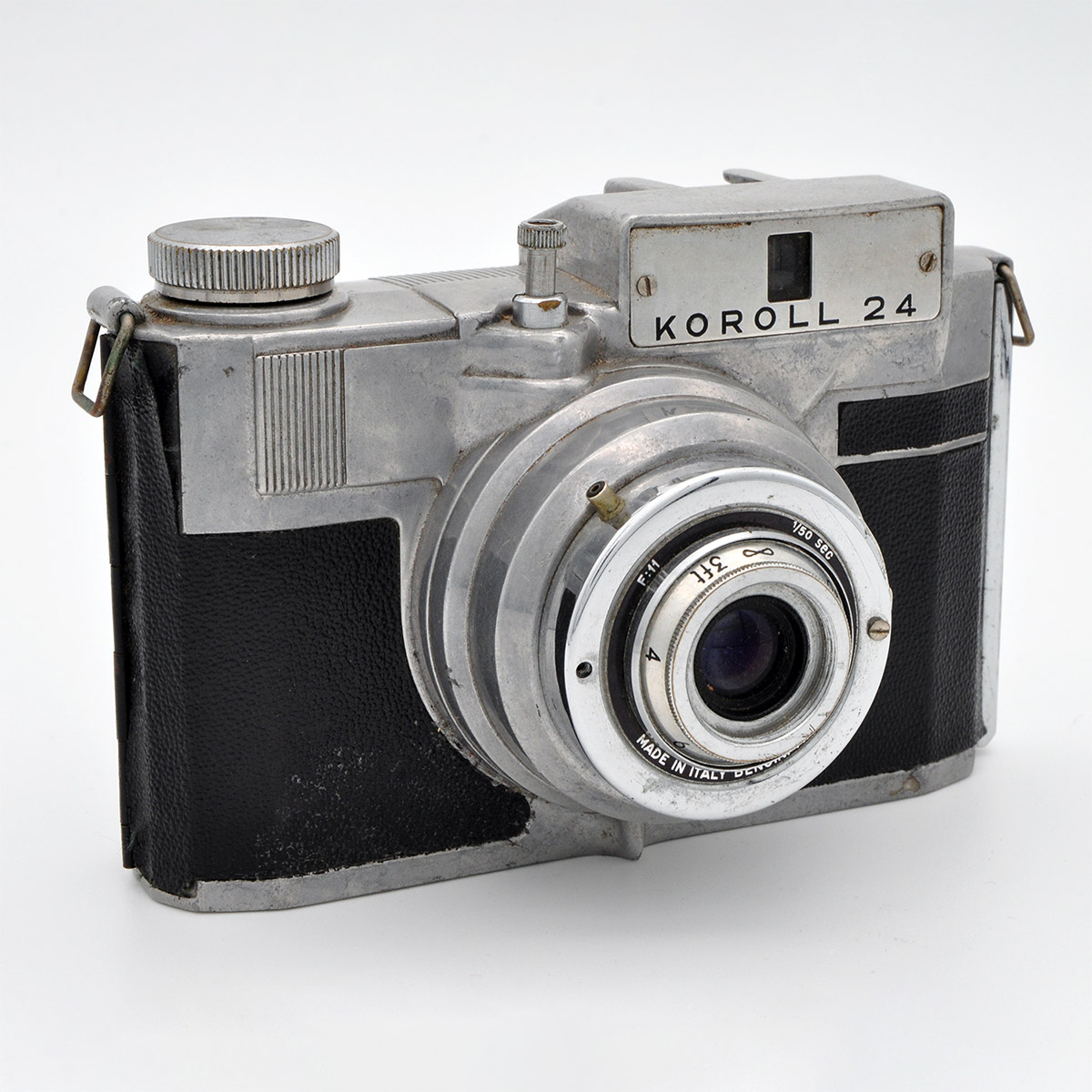Bencini Koroll 24
I’m writing this in the airport departure lounge, about to leave Milan after a short visit. This month’s camera has been in my hands for little over 12 hours, I found it on a stall at a flea market just a few steps from our hotel yesterday evening, not only is this a record quick time between buying and using a camera, but it’s also the first time I’ve written anything more than a short text using my phone. Truly I have arrived in the 21st century!
“Bencini Milano”, now there’s a name to conjure with. Long before I knew what it meant, I remember seeing it emblazoned on a shiny metal camera in the 1960s. The Bencini company made many low priced consumer cameras in the middle part of the last century, I’ve got several in my collection, and have used most of them, so although I packed a selection of film cameras for my trip, I left those at home one, after all taking a Bencini to Milan would have been like taking coals to Newcastle, but I couldn’t really pass up the chance of acquiring one of these design classics in its home city.
I’d barely started to examine the contents of the brown plastic case when the stall-holder cheerfully said I could have it for 5 Euros, it was past 6 pm and people were packing up their wares, I suspect he just wanted one last sale to close the day. There’s very little to go wrong with these models and even though the Koroll II is one of the more sophisticated versions, with 4 apertures and 3 shutter speeds, it only took me a moment to confirm that all seemed to be in order. All the while the seller was explaining that it would be impossible to use the camera as it took film. I’m sure he thought I had a screw loose when I took the back off and held it up to the light to watch the shutter open, I’m convinced he thought I was looking to see an image. I suppose I should be flattered that he may have assumed I was too young to have seen a camera that didn’t have a little screen on the back! I’d packed a selection of film for this trip, and with storm clouds gathering and the light level falling, I nipped back to the hotel and loaded up a roll of black and white Ilford Delta 400 pro. Within 15 minutes of buying the camera, I was back out on the streets.
It’s at times like this that I really regret being a monoglot, it would have been great to have returned to the stall triumphantly, the camera loaded with film and ready to take his photo to prove the point. As it was I contented myself with some tourist shots of well known Milanese landmarks, quite appropriate really given that family holiday snapshots would have been the staple diet for this type of camera in the 1960s when it was first sold. By this time, it was standard practice for snapshots to be enlarged from the negatives, 35mm film was in the ascendancy and as an amateur format, 120 roll film was on the decline. In earlier decades contact prints would have been made from the 6cm x 9cm negatives, these images being roughly the same size as today’s smart-phones screen on which so many family photos are now viewed. As enlargement became the norm, while film remained relatively expensive, Bencini designed a way to squeeze 24 photos out of a roll of 120, whose normal maximum capacity was 16. This was achieved by “wasting” part of the width of the film and reducing the negative size to 3cm x 4cm, slightly larger than a full frame 35mm negative, and plenty big enough for the modest size of enlargement that was needed for the photo album.
Back home I developed the film in Ilfosol 3, I’ve scanned the full width, so you can see how the format works in this snap shot of my long suffering wife Sandra, taken while we waited for the bus to take us to the airport. Arrivederci Milano!


